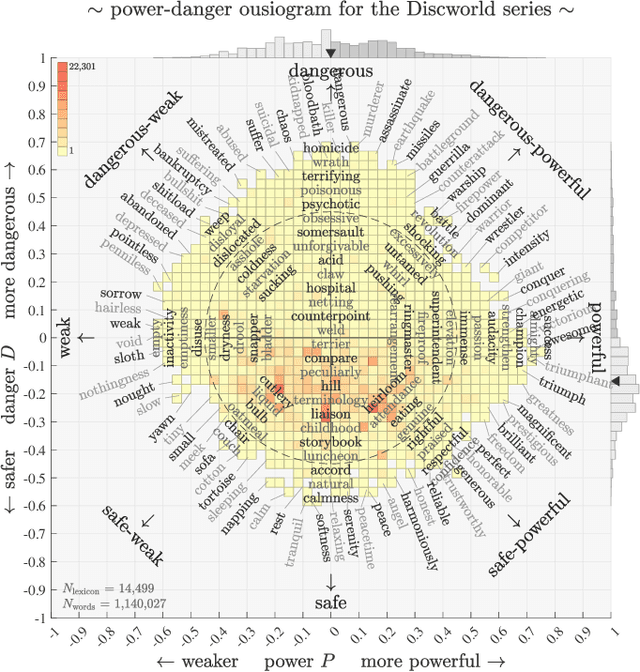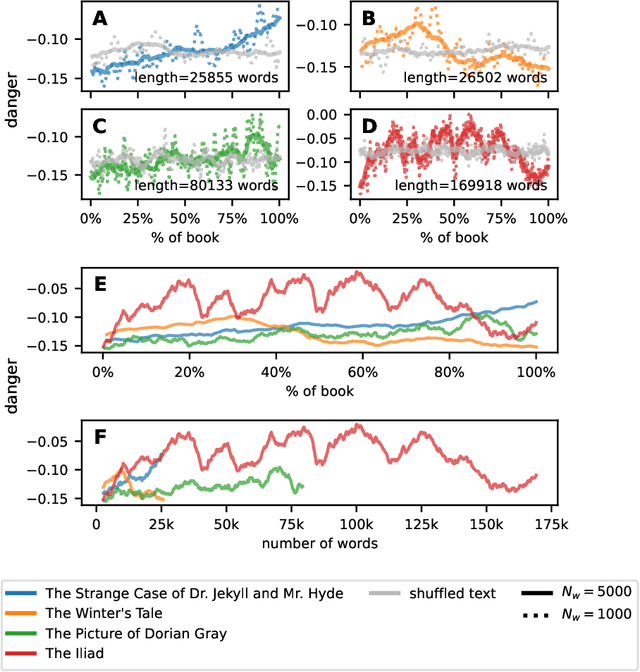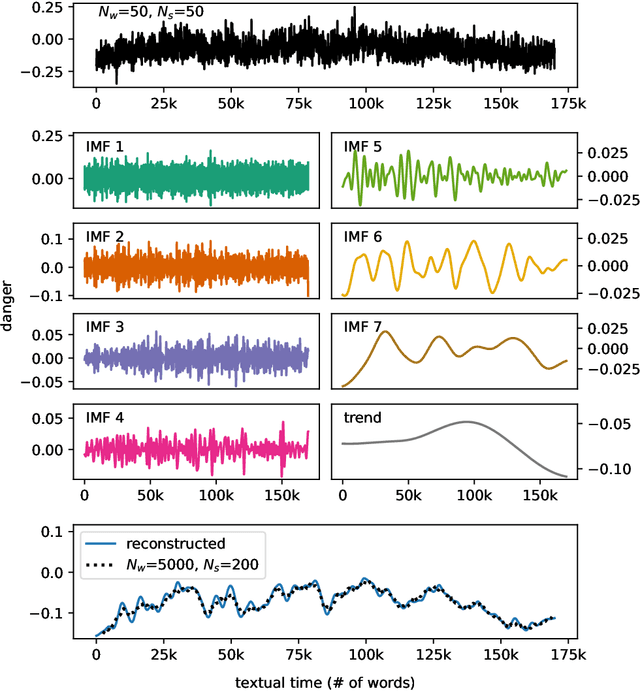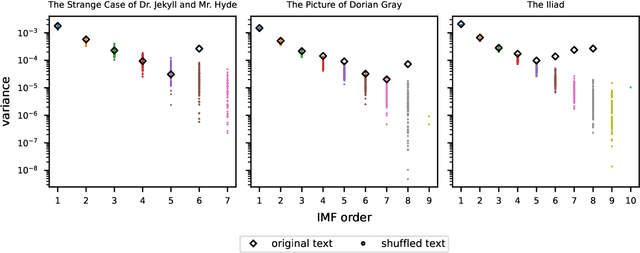Characterizing narrative time in books through fluctuations in power and danger arcs
Paper and Code
Aug 24, 2022



While recent studies have focused on quantifying word usage to find the overall shapes of narrative emotional arcs, certain features of narratives within narratives remain to be explored. Here, we characterize the narrative time scale of sub-narratives by finding the length of text at which fluctuations in word usage begin to be relevant. We represent more than 30,000 Project Gutenberg books as time series using ousiometrics, a power-danger framework for essential meaning, itself a reinterpretation of the valence-arousal-dominance framework derived from semantic differentials. We decompose each book's power and danger time series using empirical mode decomposition into a sum of constituent oscillatory modes and a non-oscillatory trend. By comparing the decomposition of the original power and danger time series with those derived from shuffled text, we find that shorter books exhibit only a general trend, while longer books have fluctuations in addition to the general trend, similar to how subplots have arcs within an overall narrative arc. These fluctuations typically have a period of a few thousand words regardless of the book length or library classification code, but vary depending on the content and structure of the book. Our method provides a data-driven denoising approach that works for text of various lengths, in contrast to the more traditional approach of using large window sizes that may inadvertently smooth out relevant information, especially for shorter texts.
 Add to Chrome
Add to Chrome Add to Firefox
Add to Firefox Add to Edge
Add to Edge